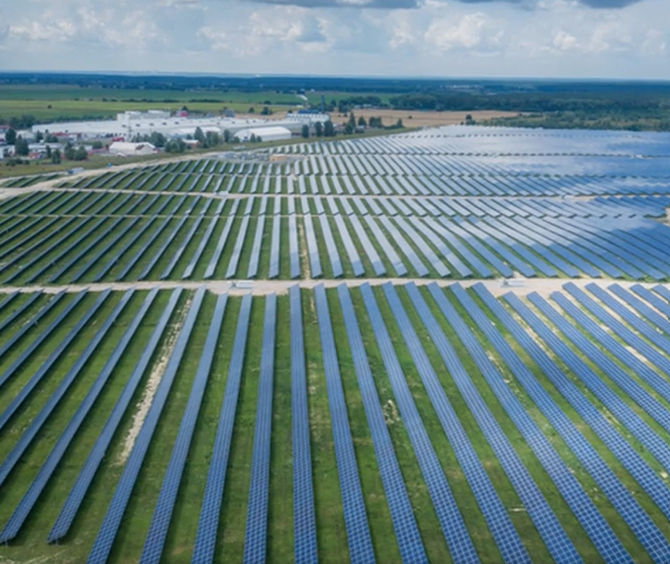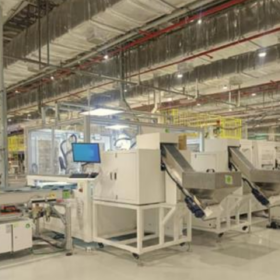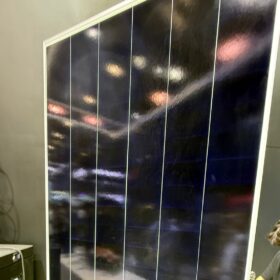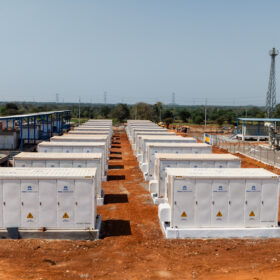For many companies operating in energy-intensive sectors, solar adoption often begins as part of broader sustainability or CSR initiatives. It’s a natural starting point—visible, measurable, and widely understood as a positive environmental step. Rooftop panels, a cleaner power source, and the added benefit of aligning with ESG expectations make it an appealing move.
In India, the industrial sector accounts for over 40% of total electricity consumption, making it a critical area for renewable energy adoption. Moreover, solar photovoltaic (PV) costs have fallen by approximately 95% since 2010, making it one of the most cost-effective clean energy options available today.
But sometimes, that’s where the conversation pauses. The panels are installed, the impact is acknowledged, and the initiative finds a place in the annual report. The broader business potential of solar—as a long-term operational asset—isn’t always fully explored.
And yet, that’s precisely where solar offers its greatest value.
For industrial operations, solar is not a replacement for existing power infrastructure. It’s an add-on—one that quietly strengthens the system. It doesn’t take over the load of heavy machinery or keep an entire production line humming through the night. But it does shave peak hour costs. It does reduce reliance on unpredictable grid tariffs. And it certainly does make a dent in monthly energy expenses over time.
Companies that treat solar as a core part of their energy strategy, rather than a side initiative, often see these benefits play out with striking clarity. The investment case is strong. In most cases, payback happens within five to seven years. After that, solar becomes a net-positive contributor to the balance sheet. It’s not a one-time gesture—it’s an annuity of savings.
According to industry studies, the average payback period for industrial rooftop solar in India ranges between 4 to 7 years, depending on scale and location, with a typical return on investment (ROI) of 12–18% annually thereafter.
Even beyond the numbers, there’s strategic logic at play. In an era where input costs are volatile and energy security is becoming a key business risk, solar provides predictability. And predictability, in any supply chain or operations function, is gold. You may not control global fuel prices or grid outages—but you can control how much of that uncertainty reaches your plant floor.
This is especially important in sectors like steel, automotive, packaging, food processing, or textiles—industries where margins are often tight, and energy costs are significant. Even if solar contributes 10–20% of a facility’s overall load, that’s a direct cost buffer. Over the long term, it creates room for reinvestment, upgrades, or operational flexibility.
For example, energy can constitute from 20% to 40% of production costs in steel manufacturing and around 20% in automotive and textile sectors. A 10–20% solar offset can translate into millions of rupees saved annually for large facilities.
And there’s more.
Industrial companies exploring solar aren’t just responding to cost or compliance. Increasingly, they’re responding to expectation. Buyers in global markets are asking questions: How was this product made? What percentage of your energy comes from renewables? Can you prove it?
This shift is quiet but powerful. It’s no longer enough to show a sustainability logo on a website. Companies are expected to demonstrate credible, quantifiable action. Solar makes that possible. Through metered data. Through third-party verification. Through transparency.
Over time, these practices build trust—not just with regulators, but with customers and investors. When a factory’s solar output is traceable, when its energy sources are visible, it signals a level of seriousness that goes well beyond lip service. It says: this isn’t a marketing exercise—this is part of how we operate.
And that clarity resonates. We’ve seen how stakeholders—be it procurement teams or ESG auditors—respond to verifiable solar commitments with confidence. It’s the kind of detail that can tip the scale in tenders, compliance reviews, or sustainability-linked financing.
Of course, for all its advantages, solar adoption in industry isn’t always straightforward. There are capital questions. Space constraints. Sometimes, policy uncertainties or internal misalignments delay decisions. But these hurdles are solvable. And in recent years, the market has responded. Financing models like RESCOs (Renewable Energy Service Company), energy-as-a-service, and hybrid PPAs have made it easier to deploy solar without heavy upfront investment.
Additionally, the evolution of technology—more efficient modules, better inverters, smarter monitoring—has reduced both the complexity and the footprint of solar installations. Even maintenance has become less of a concern, thanks to various asset management firms, improved system durability and automation.
What’s needed now is a mindset shift.
A growing number of forward-looking industrial players have already made that leap. They’re not viewing solar as a CSR commitment—they’re viewing it as a business decision that happens to deliver sustainability outcomes. That difference matters. Because when solar is seen as infrastructure—not symbolism—it gets the kind of attention, maintenance, and scaling it deserves.
And as India continues its clean energy transition, industrial adoption will be key. Rooftop and onsite solar in particular have huge potential to decentralize generation, reduce transmission losses, and ease the burden on grid infrastructure. The more industry participates, the stronger the overall system becomes.
Transmission and distribution losses in India average around 20%, and decentralized solar generation can significantly reduce these losses while improving grid stability.
There’s also a quieter, but equally important, dimension to this. When industrial solar is done well, it often triggers wider operational changes. Facilities become more data-conscious. Load curves are studied. Efficiency gains are pursued. Energy audits become regular. Sustainability starts to permeate—not just the power source, but the process.
And that’s when solar does something extraordinary. It shifts from being an environmental investment to becoming a culture catalyst inside the business.
Ultimately, no one’s suggesting that solar is the answer to everything. But it’s undeniably part of the answer—for energy resilience, cost control, ESG alignment, and long-term industrial competitiveness.
So if a company starts its solar journey under the CSR banner, that’s a perfectly valid beginning. What matters more is where the journey goes next. And whether solar is allowed to grow beyond the checklist—to become a living, cost-saving, credibility-building part of the business itself.
In that light, solar isn’t just a green decision. It’s a smart one.
The views and opinions expressed in this article are the author’s own, and do not necessarily reflect those held by pv magazine.
This content is protected by copyright and may not be reused. If you want to cooperate with us and would like to reuse some of our content, please contact: editors@pv-magazine.com.








By submitting this form you agree to pv magazine using your data for the purposes of publishing your comment.
Your personal data will only be disclosed or otherwise transmitted to third parties for the purposes of spam filtering or if this is necessary for technical maintenance of the website. Any other transfer to third parties will not take place unless this is justified on the basis of applicable data protection regulations or if pv magazine is legally obliged to do so.
You may revoke this consent at any time with effect for the future, in which case your personal data will be deleted immediately. Otherwise, your data will be deleted if pv magazine has processed your request or the purpose of data storage is fulfilled.
Further information on data privacy can be found in our Data Protection Policy.